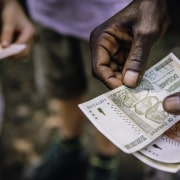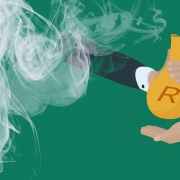|
Getting your Trinity Audio player ready...
|
Mainstream, community, and social media bombard us every day with news about the ongoing fight against corruption, this heroic activist, and that innovative intervention which will really make a difference this time – but how far have we really come?
A new white paper published this month by the French branch of the International Law Association (ILA) attempts to put this question into perspective by addressing three fundamental aspects:
- How did the fight against corruption progress in the last 15 years?
- What are the chief barriers to fighting corruption today?
- How to overcome them and take the fight to the next level?
Titled Bribery – the fight against corruption and transnational bribery, the report draws on interviews with anti-corruption practitioners, civil society members, academics, members of multilateral organisations, and activists. Consultation took place from 1 September to 31 December 2022.
“The paper does not pretend to be an exhaustive presentation of the numerous facets of corruption and the ways in which it can be, if not eradicated, at least mitigated,” says the ILA. Rather, it is “an attempt to set some clear directions in an often fragmented and confused debate, while focusing on transnational bribery in more detail”.
Download the ILA white paper on anti-corruption.
Setting the scene
For context, the paper delves into world history from the post-World War II era, through the Cold War years and the beginning of the 21st century, to the current anti-corruption landscape.
During the first period, the cross-border nature of corruption began to emerge. The model of governance that developed in the wake of the second world war did not include an anti-corruption component, and was still considered a purely domestic problem. “While international trade, driven by Western countries’ companies, was gaining significant momentum, payments to foreign public officials were largely accepted as a necessary means to successfully conduct business abroad. Witness, for example, the tax-deductibility of such payments in many capital-exporting countries.”
In 1977, with the US’s enactment of the Foreign Corrupt Practices Act (FCPA), that bribery of foreign public officials began to be seen as a criminal offence, says the ILA, and this concept of transnational, or “foreign” bribery, as opposed to the long-standing notion of domestic bribery, was a watershed moment.
In the final two decades of the 20th century, the fight against corruption began to build up steam, and the early 1990s were a particular turning point. “The model of governance that took shape both domestically and internationally no longer saw corruption as a political problem but as a scourge hindering economic and social prosperity and undermining political stability.”
Bribery in international business was increasing seen as a global issue, and this view was given effect in the 1997 adoption of the OECD Convention on Combating Bribery of Foreign Public Officials in International Business Transactions (the OECD Anti-Bribery Convention or OECD Convention). The convention established a level playing field in international business amid the increase then of cross-border activity, by setting out legally binding standards to criminalise bribery of foreign public officials in international business transactions.
Around this time other multilateral anti-corruption instruments emerged, such as:
- the Inter-American Convention Against Corruption in 1996;
- the Criminal Law Convention on Corruption of the Council of Europe in 1998;
- the African Union Convention on Preventing and Combating Corruption in 2003.
Then came the UN Convention against Corruption (UNCAC) in 2003 – “the first and only universal instrument against corruption”. To date, the UNCAC has been signed by 140 countries or organisations and ratified by 189 countries. It is the broadest anti-corruption standard-setting instrument in terms of geographical reach and thematic scope, covering both the bribery of public officials and private to private bribery, asset recovery, and a host of preventive measures for the public and private sectors, as well as international co-operation provisions.
Soon after, multilateral development banks (MDBs) such as the World Bank, began to view corruption as more than just a political issue and implemented measures for, among others, designating corruption as a sanctionable activity. “The sanctions system developed and implemented by the World Bank has influenced the sanctions systems of a number of other multilateral development banks, as evidenced by their adoption of harmonised standards.”
In this area the ILA also notes the 2010 cross-debarment agreement between the World Bank, the Asian Development Bank Group, the African Development Bank, the European Bank for Reconstruction and Development, and the InterAmerican Development Bank Group, as well as the continued co-operation amongst MDBs.
The status quo
This brings us to the current situation, and the increasing prioritisation of anti-corruption measures in the global agenda.
Because of the increased activity around anti-corruption and more specifically foreign bribery, says ILA, “the resulting volume of anti-corruption norms and initiatives begs the question of their impact on the level of corruption in practice.”
It is clear that the concept of fighting corruption has gained exponentially in importance in recent times, and in the last two decades, says ILA, “policymakers have time and again reaffirmed their resolution to eradicate corruption and bribery in all its forms.”
Some of the more high-profile initiatives include the G20’s 2010 establishment of its Anti-Corruption Working Group, the UN’s Sustainable Development Goals of 2016 – especially Goal 16 on peace, justice, and strong institutions – and the adoption in 2021 by the OECD council of the 2021 Anti-Bribery Recommendation.
But where do we stand in practice?
There is no clear-cut answer to this particular question, says ILA. The progress of the last 30 years is undeniable, evident in instruments such as the OECD Anti-Bribery Convention, and the increased levels of transparency in government dealings. However, corruption continues apace.
“In 2007, the UN and the World Bank estimated the cross-border flow of the global proceeds of criminal activity, corruption, and tax evasion at between US$1 000-billion and $1 600-billion dollars per year. Nearly a decade later, the IMF estimated in 2016 that bribes (a form of corruption) alone would cost the world between $1.5-trillion and $2-trillion each year, or nearly 2% of its GDP.”
So the simplistic answer, says ILA, would be that while we have made great progress, much more needs to be done. Corruption seems to evolve as measures evolve, staying tantalisingly just out of reach, though remaining very close at hand – therefore existing measures must be constantly monitored for effectiveness and adapted where necessary.
While international standards have added significant power to the fight against corruption, notes the ILA, a lot of ground remains to be conquered, starting first and foremost with the adequate and effective implementation of existing standards. “Although it cannot be said with certainty why corruption remains high despite the volume of norms regulating it, one could argue that improperly or non-implemented rules can procure an artificial sense of security through the misguided notion that a problem is being addressed.”
Undeniably, fighting corruption remains an uphill battle. “Nonetheless, erring on the side of cynicism and giving up the fight against corruption would be totally misguided.”
Challenges abound, but are not insurmountable
The white paper makes note of several existing challenges.
- Improving the effectiveness of the existing legal framework, the weaknesses of which include:
- Lack of political will;
- Insufficient human and financial resources;
- Insufficient coordination and co-operation among domestic agencies;
- Insufficient coordination and co-operation among international institutions;
- Mutual legal assistance (MLA) system not adequate for complex financial crimes;
- Persistent need for an anti-corruption regulation at the national level;
- Corruption is more than bribery.
- Persistence of binary approaches.
- Global cases are yet to be resolved globally.
The way forward
The ILA is of the view that there is “no need for initiatives just for initiatives’ sake”. Rather, existing initiatives should be prioritised according to their ability to either make existing initiatives more effective, to close loopholes, or to be effective.
The organisation also makes several recommendations:
- Increased international co-operation, as this is vital for successfully resolving foreign bribery cases. The private sector must be brought in, and enforcement mechanisms must be harmonised to overcome procedural hurdles and achieve a common enforcement speed. In addition, MLA effectiveness needs improvement.
- Increased transparency, which has improved in recent years thanks largely to the relentless efforts of civil society. Nevertheless, says ILA, transparency remains an uphill battle.
- A greater emphasis on prevention is needed. The ILA has observed that because preventive measures take longer to bear fruit and are often not directly visible or easy to measure, authorities focus less on them. One expert suggested a corruption check for every piece of legislation à la the current Albanian system, to measure the corruption risks that each new law creates.
- Western counties must stop sheltering dirty money – this unethical practice was criticised by multiple experts, who also pointed to the hypocrisy of high-income countries accusing lower-income countries of institutionalised corruption, while they simultaneously accept the proceeds of such corruption into their own financial system, thus indirectly benefiting from them.
- All stakeholders must be involved, including bringing the private sector on board through industry-specific collective action, as well as raising awareness to better engage civil society and the general population.
- Building and sharing knowledge is vital. This includes more research on the impact of corruption on its victims, the digitisation and transparent sharing of data, and increased media coverage of the fight against corruption.
- Building capacity through the education of civil servants and the promotion of integrity within governments.
- Better ways to fight conflicts of interest, which will address problems such as the revolving door phenomenon, and strengthen efforts to guarantee ethics and integrity in government. The ILA is of the view that “serious consideration should be given to developing a universal framework providing a common understanding and a regulatory setting for the various forms of conflicts of interest”.
- Rethinking or enhancing the role of international organisations including the World Bank.
Download the ILA white paper on anti-corruption.








